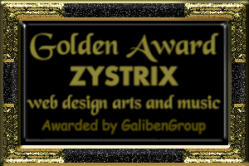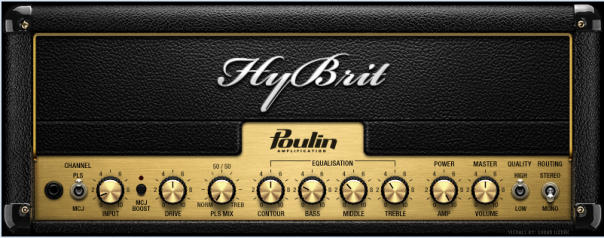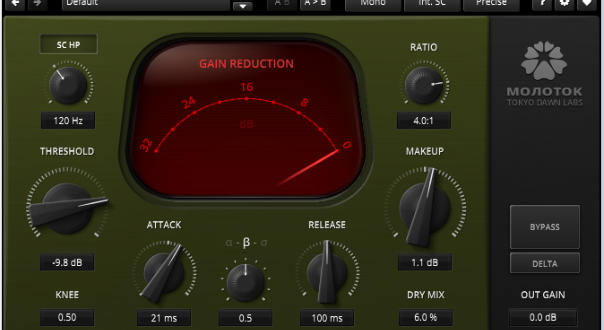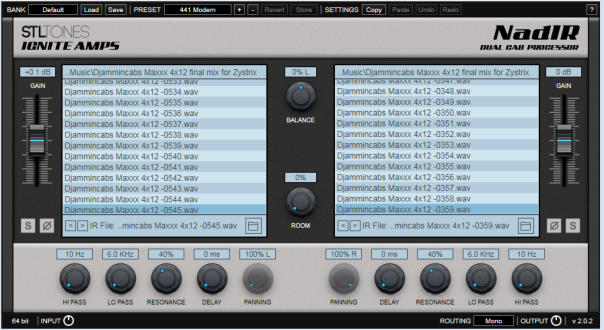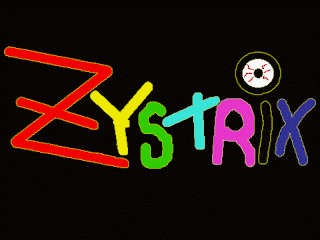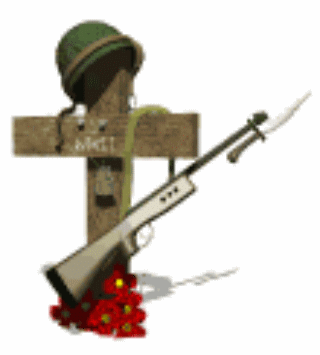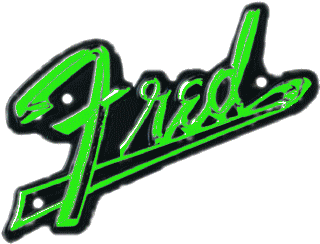What’s new at Zystrix? Read on…
May 15, 2023
Before I go into the continuing saga of
how to record metal guitar, rock guitar,
and building Satan’s Amp of Doom
there are two things I’d like to cover quickly. The first one is…
Happy Memorial Day
Memorial Day is a federal holiday in the USA
for the observance of U.S. military personnel
who died while serving in the armed forces.
Memorial Day used to be called Decoration
Day back in 1868 and it was a day to
decorate the graves of the fallen soldiers in
the American Civil War. In 1967 the name
was officially changed to Memorial Day.
Although it was observed at various times in various communities,
in 1971 it was declared to be observed on the last
Monday of May. Historically flowers or a small flag were
placed on a fallen soldier’s grave. Please have a safe
holiday, and if you have a chance, take a moment to
honor those who gave all for our freedoms. Salute.
Special Thanks
And last time I forgot to thank Cynthia Esparza in Paraty, Brazil for
the pencil drawing of my likeness. I’m so sorry. Anyway, it’s
beautifuI -- I posted it up above.
And now on with the show…
How to Record Metal Guitar
How to Record Rock Guitar
This Zystrix posting is the eighth of a several part series designed to
help a person record guitar, specifically metal and rock guitar, no
matter your skill level. And the main crux is how to do an excellent
job on a low budget. Please know that there are many types of gear
that are glossed over or omitted here because there’s just too much
great gear to list.
Last time in part seven we covered gain staging, or as many people
call it, pedal stacking. For a refresher overview click on the arrow
pointing left by the wrist watch at the top of this page and click on
the yellow megaphone to come back here.
This time I’d like to start with recording metal guitar -- the easy
beginning essentials. As so much of this stuff, this may seem
mundane and boring to some, but it can and will impact your sound
in a big way. By this I mean if you decide to scrimp here your project
will suffer and so will your album and music reviews. And nobody
wants that. So grab something to eat, kick back and settle in your
favorite chair, open a beverage, and enjoy. Ladies please remove
your hats, please hush your babies, please turn off the ringer on
your cell phone, and please don’t forget to return the car speaker out
onto it’s hanger before you drive home tonight. Thank you for
visiting our outdoor theatre. And here we go…
How to Record Killer Metal
and Rock Guitar
The Ultimate Guide
(Part Eight)
THE FINE PRINT: Zystrix is not and has never been a participant in any advertising program including
but not limited to the Amazon Services LLC Associates Program, Sweetwater, Reverb, or any other
affiliate advertising program designed to provide a means for sites to earn advertising fees from
readers by click-through advertising and linking to the aforementioned or any other companies. Zystrix
does not use Google Analytics, therefore this site is not required to have those annoying cookie
agreement popups. Zystrix has no links associated with the sale of any products, and we do not allow
this. This keeps our reviews honest, cuts out any unnecessary middle man, and keeps this website
free from cookies and the influences of Google and other unethical purveyors of your digital exhaust
and personal information. Open source. It’s our mantra.
Recording Metal Guitar
In the Beginning…
This isn’t really the beginning of recording metal guitar, it’s more like
starting in the middle. I’m going to skip over the old fashion method
of recording guitars using microphones and various placements,
speakers, pre-amps, compressors, and so on. That is the real
beginning of metal guitar, and that method is not easy. If you are
interested there are many websites and videos available for those
techniques. To get really good at it takes time and experimentation.
And once you’ve mastered those techniques there are many other
cool things a person can do (that simulators simply can’t) like having
portable panes of glass, wood, carpets, dog chains, loose snares,
and so on to add to your recording arsenal. It goes on and on.
Eventually we all land on our favorites. Recording is a beautiful
thing, and the knowledge seems to be infinite.
Here are a few tips I will lightly gloss over for this In The Beginning
section. Like I said, if you’d like more information there are many
videos and websites that go into much more detail on most of these
topics…
Useful Ideas for Recording
Metal Guitar
#1. Do not scoop the mid-range out of your guitar tone, that is,
unless you want your guitar to get lost in the mix. Guitar mid-range
detail is imperative if someone is going to hear it. Besides, it’s
needed if someone’s going to try to copy all your hot guitar licks from
your album. Imitation is the most sincere form of flattery.
#2. Many guitarists use too much gain for their sound, or at least
that’s how the argument goes. The popular idea is to turn down the
amp gain and use a pedal (like a Tube Screamer type) to tighten up
the front end distortion. I’m not much on the pedal idea. Personally
I prefer more gain, but if it’s maxed out it may get a little too difficult
to make out what you are playing. Regardless of your distortion
level, seek definition. Or here’s another way. Record two tracks:
one direct from your pickups and one from your over-the-top (or
however you like) amplifier sound. Now use the straight off the
pickups signal and use a cleaner (and harder) simulated guitar
sound mixed behind the overly distorted guitar and it will add
definition. And there it is -- roaring massiveness I can understand.
Groovy.
#3. Don’t get too crazy with the low end of the guitar tone. Let the
drums and bass have that territory. Try rolling off somewhere
between 100 and 160 cycles while letting the guitar sound natural.
And if your guitar is making it hard to hear the snare drum either turn
down the competing frequencies (an analyzer makes this job
easier), or (my favorite) use a side-chain on the guitar compressor
so the snare drum triggers it and pulls down the guitar volume for a
fraction of a second. The mix should clean up considerably, and it’s
instant zen for the drummer and guitar player(s).
#4. A lot of guitarists dampen their strings behind the nut and in the
back of the guitar in the springs of the whammy or wang bar. They
use foam or cloth of some kind to quiet the over-ringing when doing
palm muted types of playing. I can’t say I’m so sold on this idea
either, but if your music demands silence in between passages then
it’s a must, especially if your guitar is noisy. Staccato is called
staccato for a reason. And it makes the work of a noise gate much
easier. What music do you hear in your head? Use that method of
damping. I never dampen anything – raw, no field dressing, please.
I prefer “blood and guts and veins in my teeth”. I’m funny that way.
#5. Don’t spend too much time on your recorded guitar tone if it’s
being soloed. It’s always better to blend something in relation to the
rest of the mix. So mix your guitar with the rest of the band.
#6. There is a lot of guitar track layering in metal guitar recordings.
It’s another idea I can’t say I’m exactly sold on, but it has become
ubiquitous. If it’s done judiciously it sounds better. One of the
problems I have with is when it is done to the point that the recording
is engorged and hard to believe. “I bought your album yesterday. It
really sounds big. How many guitar players do you have in your
band? Twenty?” Another aspect of this idea is when there is a
guitar soloing and a symphony of guitars behind it. Does your band
sound like that live? Probably not. And in a trio situation it’s worse.
#7. If you’ve decided to use microphones on your speakers try to
keep it down to two – maybe two dynamics or a dynamic and a
ribbon. A third microphone (a condenser) is OK for a room and cab
sound. I’ve seen guitarists demand a microphone on every speaker
in their stack when two microphones would have been perfect. And
then there’s the problem of phasing. And phasing is relatively easy
to fix with modern recording gear, but extra microphones don’t make
your guitar sound any bigger, and it usually sounds smaller.
Mosquito tone anyone? Less is generally more. Want a bigger
sounding guitar? Try stacking guitar cabinet impulse responses. Try
using chord inversions. Try using chords with open strings. Try
using a ghost track (example below). Try backing your guitar (Wav
to MIDI conversion) with a slight and distant synth pad (pleasant,
dreamy, curious) or a horn-like sound through an amp simulator
(immediacy, anger, distortion complexity).
#8. Bring a tuner to the recording session. Use it often.
#9. There’s a mantra going around that says don’t cut and paste
guitar parts. Bologna. OK, you can groan here. Cut and paste is a
fast and easy way to double tracks and it can sound great. It also
saves on recording time. I’m serious. It all depends on how you do
it. I’ll cover this below in Record Once and Sound Twice.
#10. Record your guitar through your pedal board as a distinct
sound that is separate from the computer plugin sound. The guitar
will have more complexity and be more interesting. Not only that but
your pedal board is your musical sound personality. That’s you,
baby.
# 11. Run your guitar through a small (or large) loud speaker with
lots of gain and compression while recording off of the guitar
pickups. It’s more horsing around during the recording session but it
adds a certain live feel that is is not possible otherwise.
OK, the boring preamble is done. Let’s move on to recording a
metal guitar...
What Do I Do Now?
Like I said earlier, we are going to use an easier method of recording
metal guitar than using microphones and cabinets and roaring amps.
And it’s free. If you remember, this whole guitar recording series is
about easy and inexpensive. So that’s going to be the general
direction here.
As you can probably tell, I don’t exactly ascribe to the current
methods of recording metal guitars, but that’s OK. As long as you
know that. We’re going to deviate from the norm somewhat.
Besides, it’s more fun.
To begin, and so we are on the same page (at least for sound) we
are going to build Satan’s Amp of Doom. So anyone who follows
this guideline and examples should be able to closely recreate the
guitar sounds presented here.
NOTE: Below are sound examples of various recording techniques
for metal guitar, so if you don’t feel like reading through all the details
presented here you can scroll down and skip to the recorded
examples and hear the results. Pure amusement park excitement.
How to Build
Satan’s Amp of DOOM
“Why would anyone want to use such an amplifier? Besides, I have
my own sound. I don’t need this.” For all of the following audio
examples I will be using Satan’s Amp of Doom because it can be
had by anyone – it’s free. No, it’s not like the goofy video at the top
of this page, it’s a real sound. So theoretically you should be able to
copy my guitar sound and mixing methods easily, or at least come
pretty close. Also, these amp settings are guidelines, so adjust them
to your own taste. Use your own sound later if you’d like. Or save
Satan’s Amp of Doom in a plugin like N.A.M. or Proteus. Or
whatever. And how does a person get this free amp? You’ll need to
download a few things for your DAW (digital audio workstation).
Here’s the list:
Poulin Hybrit amp head VST
TSE X30 v1.6 Sylvania
NadIR (or equivalent) convolver
Djammincabs Maxxx 4x12 (for the first example I stacked models
#0545 and #0359 in mono)
Molotok compressor
Here’s how to put the guitar sound together…
Put the TSE X30 v1.6 Sylvania first in the chain. The reason I chose
the Sylvania is because it has a slightly tighter sound than the
Sovtek and that’s what is needed when recording metal guitar.
Generally the tones are set lower for more control later…
Input = noon
Drive = 2 o’clock
Bass = 8 o’clock
LoMid = 8 to 10 o’clock
Treble = 8 to 10 o’clock
Output = unity or about 10 o’clock
(see photo below for settings)
It is common to run the distortion on a metal guitar recording a little
lower than what a person may think. However, I run mine higher
because I just like it better that way – once again, blood, guts, and
veins in my teeth. You have to be the judge for your own sound.
Now run this signal into the Poulin HyBrit head and here’s the
approximate settings -- your mileage may vary…
CHANNEL = PLS
INPUT = 8 o’clock
DRIVE = noon
PLS MIX = full counter clockwise
CONTOUR = noon
BASS = 8 to10 o’clock
MIDDLE = 8 to 10 o’clock
TREBLE = 8 to 10 o’clock
POWER AMP = 10 (full)
MASTER VOLUME = noon
QUALITY = high
ROUTING = mono
(see photo below)
The reason I chose channel PLS is because it tends to be a tighter
sound. And, you guessed it, metal guitar tends to require a tighter
sound. Also, use the HyBrit for fine tuning any last EQ settings.
The signal then goes into the NadIR and I used Djammincabs Maxxx
4x12 IR cabinets #0545 for the left and #0359 for the right mixed to
mono. Why do I use Djammincabs Maxxx 4x12? Because they are
free, there are many speakers and cabinets other companies simply
can’t build or imitate, and these offer more sonic options than any
other guitar cabinet impulse responses available (see photo below).
After that the signal goes to the Molotok compressor and I use
settings that tame the sound but don’t squash it. I let the original
signal poke through the compression somewhat so it sounds (you
guessed it) tighter (see photo below).
This combination is Satan’s Amp of Doom. And yes, there are
other versions that are close (like with a 2x15 cabinet or 2x12), but
this is close enough for the following examples. So let’s move on to
the recorded examples of metal guitar recording techniques.
Record Once and Sound Twice
Recording tip #9 above refers to guitar cut and paste techniques and
that is what we will do here. Using this method requires that the
guitar player have musical sections or phrases that are identical.
Otherwise it will not work. And thankfully most metal (and many
other music types) is structured that way. Then the phrases are
added to each other side by side to sound like it was played twice
when in reality it was only played once. This recording method
tends to be much easier and faster than playing the same thing a
second time, and your guitar player will thank you for it. Here’s how
it works (see DAW photo and corresponding number explanations
below).
#1. This is the original recorded guitar track of a repeating phrase or
motif. The effects include Satan’s Amp of Doom. This track is then
duplicated (effects included) and pasted to the track below in the
same time location.
#2. This second copied and pasted track is played in a loop to find
the perfect place to split the track (see arrow #2 for the end of
highlighted loop point). The highlighted area is where the loop is
and the splice comes at the end of this loop on the second track.
#3. This spliced part is then moved to the right and added to the end
of the phrase. I left an opening in the photo above to show the size
of the split piece and where they would go together, but in reality the
bottom two pieces would be touching each other and be “glued”
together. NOTE: the spliced part can be any size that fits musically.
#4. Now the whole second track is slid to the left to align the two
tracks in time, one track is panned hard left and the other hard right,
and the top and bottom tracks play together perfectly. One guitar
track becomes two tracks in a flash.
Hear The Results
ONE GUITAR In this first audio example only the original raw
unadulterated guitar track is played. This is a typical lone or single
metal guitar sound. This could also be an example of the top track
(#1. above) being played by itself. The mono guitar is panned to the
middle for this audio example.
Click to hear the mono guitar example.
TWO GUITARS In the following example the same track is
copied, split, and track shifted (as shown above). This will become
the “second” recorded guitar. All Satan’s Amp of Doom VSTs are
copied to this second guitar track for the guitar sound. The impulse
response cabinets have changed to #1031 and #0989 on this
second guitar to keep it interesting and to keep with the illusion of
two guitars. Everything else is the same. The guitar parts are then
panned or spread hard left and hard right for metal guitar style
realism. Another Molotok compressor at a very light setting is added
to the two guitar bus to keep the signals relatively even.
Click to hear the “two guitar” example.
GHOST Here’s the same single guitar recording, Satan’s Amp of
Doom, and the same amp effects with the same settings are copied
once again to a third track, and reduced mid-range EQ and free tight
ping-pong delay (ReaDelay by Reaper) and heavy compression are
added. (NOTE: ReaDelay is a VST that can be downloaded by any
one, the interface is clunky, but beauty is in the ear of the beholder.)
This is then mixed as a third “ghost” or subliminal guitar part in the
middle of the mix. The same Molotok compressor bus settings are
still used now for all three guitars.
Click to hear “two guitars” with a ghost example.
BAND Here’s the same recording as above but extended slightly to
include drums, bass, and effects. In this relatively easy-mix metal
guitar example there is no side-chain ducking and no overall reverb.
Click to hear the full band example.
To keep with the theme of easy and inexpensive the drums are the
free MT Power Drum Kit by Manda Audio. The free Xtressor Nuke
by Kiive Audio gives the kit a fat heavy drum crush type feel. The
snare drum sample used is the free Zystrix acoustic #411 with the
free Valhalla Supermassive on Libra Non Linear for a room sound.
The free bass drum sample is the Zystrix acoustic #1363 run
through the Zystrix Bonus Reverb #001 to make it sound fatter. Two
cymbal samples are from the Zystrix free Oriental Gongs, Cymbals,
and Bells download oriental cymbal #17 and #42. The gongs
(background fill) are from the same free download and it’s gong #96
and then #41. The bass guitar sound is the free Bass Grinder by
Audio Assault, and this is run through the free BOD by TSE Audio
and then the free TLs-1295-LEA by TBT for a LA-2A type
compressor feel. The Leveling Tool by ADHD Audio Tools is also
great for bass guitar compression. The free limiter LoudMax by
Thomas Mundt is used on all instrument busses and the output bus.
The output bus also has the Nova (set flat) and then the VOS (set to
German mastering) both by Tokyo Dawn, and these are placed
before the LoudMax. The weird sound at the edge of the tune (synth
pad) is from the free Zystrix Pro Audio Samples #148. The effect
doesn’t need to be there, it just adds another voice.
And all of these sounds and effects can either be supplemented or
replaced entirely as needed with all your favorite pay versions.
That’s it for now. You deserve a break.
Don’t touch that dial…
Stay tuned next time…
Congratulations. You made it to the end of this section. As you may
know there are two main camps or schools of thought for the studio
techniques of recording heavy guitar. And this time it was about
metal guitars. Later we’ll cover a few more points about metal
guitar, and then we’ll move on to a single raging guitar. Then things
will get a little more complicated. After that we’ll cover old tricks,
modern and popular tricks, and maybe a few you never tried. Damn
we’re almost done. Are there any questions so far? I forgot to ask…
Old friends, new music, great beer -- my kind
of get-together.
Knowledge, art, and music for all…

Zystrix = a source, shaman, or library disseminating secret or lost knowledge, art, or music.











ZYSTRIX
POPULAR FREE DOWNLOADS
Introducing
the
next
generation
in
guitar
cabinet
impulse
responses.
Try
the
new
Djammincabs
Maxxx
4x12.
All
of
these
cab
IR
files
are
based
on
old,
new,
and
boutique
4x12
cab
curves.
All
are
recorded
in
beautiful
24-bit
48K
mono
and
will
work
on
most
free
and
paid
digital
convolvers.
Hear
the
guitar
IR
breathe
fire
with
pure
attitude.
Don’t
be
suckered
in
with
high-dollar
sales
pitches,
there
ain’t
no
guitar
IR
downloads
better
than
these.
Choose
from
many
cab
sound
recording
styles:
cone,
edge,
angled,
arm
away,
inside
cab,
back
of
cab,
or
back
of
room.
Djammincabs
is
the
world
leader
in
guitar
cab
IR
invention
--
no
other
guitar
IR
company
can
imitate
these.
Djammincabs
Maxxx
4x12
makes
it
easier
for
you
to
design
your
own
personalized
sound
--
even
your
own
Metal
IR
pack.
If
you
can’t
find
a
cabinet
or
combination
you
like
here,
then
you
don’t
like
4x12
cabinets.
This
guitar
IR
download
also
includes
a
Tactical
Munitions
Manual
with
suggested
uses
and
detailed
cab
combinations.
This
is
the
best
free
guitar
impulse
download available anywhere.
Djammincabs Maxxx 4x12
“Murder Your Competition.”
I feel brave. I want to try them now. Here’s my email...
Djammincabs for Guitar
Download Free Guitar Impulse Responses
Click here to download
over 200 Free Guitar Cabinet Impulse Responses.
Djammincabs for Bass Guitar
Download Free Bass Impulse Responses
Click here to download
over 200 Free Bass Guitar Cabinet Impulse Responses.
Best Free Guitar Impulses.
The Top 11 Best Free
Guitar and Bass
Cabinet Impulse Responses for 2022
(in alphabetical order…)
Find, download, and test the best
free guitar cabinet impulse responses for 2022.
FREE BASS LOOPS SAMPLES DOWNLOAD
ROYALTY FREE BASS LOOP SAMPLES
FREE BASS LOOPS
Over 200 samples are included in the collection
Download the complete collection of 24-bit bass loops here.
NOTE: This download size is approximately 369 Megs.
Free Pendulate Synthesizer Presets
Original Newfangled Audio Pendulate
synth patches/presets
Click here to download over 240
Free Pendulate Synth Presets (patches)
Synapse Audio
Dune Synthesizer
Download Over 200 Free
Synapse Audio
Dune 2 and Dune 3
Synthesizer Patches and Presets
Click here to download over 200 FREE Synapse Audio
Dune 2 or Dune 3 synthesizer patches or presets.
NOTE: This synth patch download is slightly over 1 Meg in size.
Free Reverb Impulse Responses
Choose from hundreds available in
48K 24 bit WAV format
including new original reverbs.
CabSpace
Over 400 Guitar Isolation Booth Reverbs
Download over 400 Free Zystrix Original Reverb Impulse Responses,
and over 200 Free Zystrix Original BONUS Reverb Impulse Responses.
Download all the Alesis MIDIVerb 4 reverb impulse responses.
Download all the Lexicon MPX-1 reverb impulse responses.
Download all the Alesis Wedge reverb impulse responses.
Download over 50 Reverb Relics from the past.
Click here to download free reverb impulse responses.
Free Drum Samples
Only Available from Zystrix
Free Gong Samples and Sounds
Free Snare Drum Samples and Sounds
Free Bass Drum Samples and Sounds
Free Oriental Cymbal Samples and Sounds
Free Oriental Bells Samples and Sounds
The Ultimate Original Drum Sounds List
Download over 2000 original slammin’ rock bass drums.
Download original Gongs, Cymbals, Broken Cymbals, and Bells.
Download Over 200 Free Original Bass Drum Sounds and Samples.
Download over 200 Original Free snare drum sounds.
Click here to download Drum Kit Sounds.
Dangerous Neighbors
The SW Michigan Power Trio.
Free Rockin’ Music Downloads
The
music
for
the
next
book
will
be
out
in
2023.
Production
is
a
little
behind
but
there’s
a
sneak
peek
demo
of
how
it’s
supposed
to
go
for
the
first
tune
on
the
album.
This
tune
is
called
Sting
of
Death
and
it’s
the
backing
music
for
the
first
chapter.
Click here to download recent Dangerous Neighbors.
Download
tunes
from
the
80s
to
today.
Use
the
special
codes
on
the
Embalmed
for
Life
page
(see
the
DOWNLOAD
FREE
AUDIO
BOOKS
link
below)
and
get
free downloads for the complete album and the free horror audio book
The Fluid - Embalmed for Life.
Click here to download various music from Dangerous Neighbors.
Download Free Synth Samples for
Intros, Interludes, and Endings
Listen to example #01 by clicking here (MP3 Sample)
Download FREE professional quality stereo sample packs that slowly
evolve over time. All samples are in 48K 24 bit WAV format and are
about 20 seconds long or more. If you like suspense, psycho, outer
space, or terror then this collection is for you. These range from
paranoia to sci-fi, cinematic gore to strange industrial horror, and creepy
creatures to insane laboratories.
Click here to download all the synth Intros, Interludes, and Endings.
DOWNLOAD FREE
AUDIO BOOKS
The Fluid, Embalmed for Life
There are Free Audio Book codes for Audible downloads (must sign up).
There are also free sample downloads of the book reading.
There are free downloads of music samples.
There is a free “Look Inside” download of the paperback.
There is a free glossary of the largest list of mortuary slang in the world.
The Free Dangerous Neighbors Album The Fluid, Embalmed for Life comes
included as part of the audio book and parts are available here as a free
download.
The paperback book is available for sale at Amazon dot com. I have no control
over these sales; because of the Amazon agreement I cannot offer complete
paperback or complete audio books here. I’m sorry for any inconvenience.
Click here for free audio books,
book reading samples, music samples, etc.
NEW RULES NOTICE -- What Zystrix does with your download information…
Take me back to the top of the page.




















